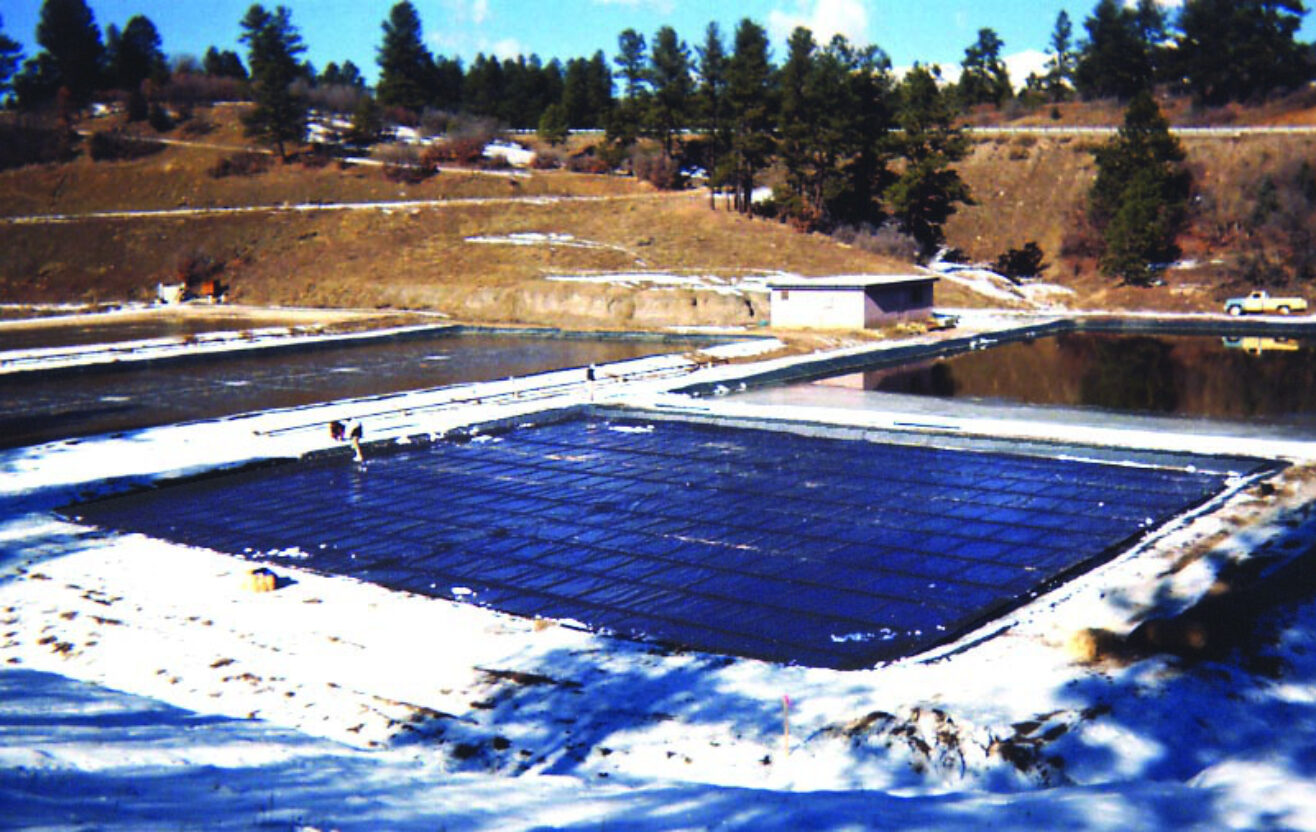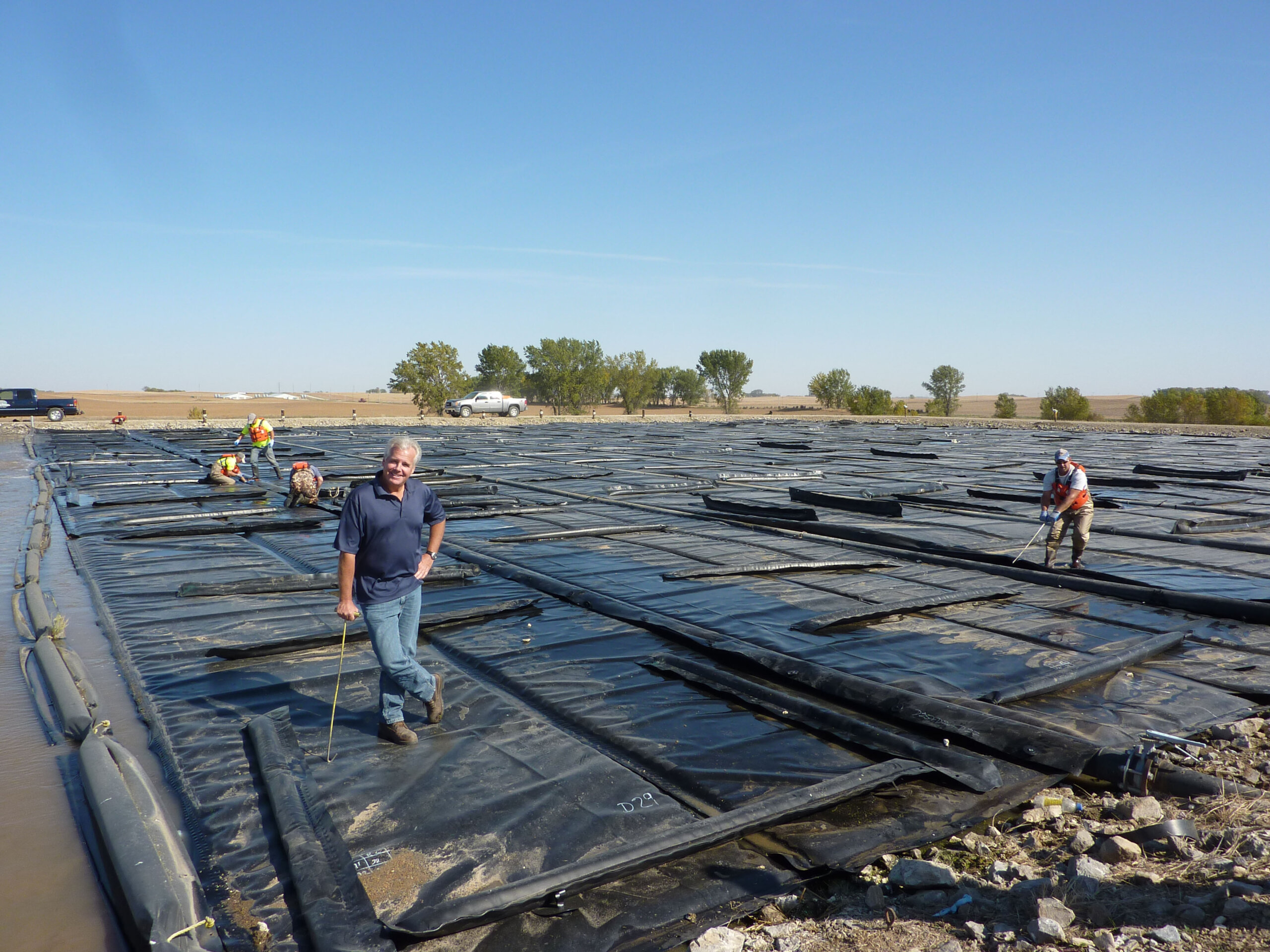Cover System Helps Optimize Wastewater Treatment in Cold Climates

Cold climates present serious difficulties for biological wastewater treatment. Falling temperatures produce lowered biological activity in lagoons, which re- sults in lower BOD removal rates. Total nitrogen removal and ammonia removal rates also decline as air and water temperatures decrease.
Ammonia removal is a particular challenge. Ammonia is removed from lagoon-based wastewater treatment systems through several processes, including oxidation by nitrifying bacteria into nitrates (NO₃) and nitrites (NO₂). Nitrates and nitrites are subsequently converted to molecular nitrogen (N₂) by denitrifying bacteria. The action of these two types of bacteria is highly temperature-dependent.
Recognizing the difficulty of ammonia and total nitrogen removal at colder temperatures, environmental authorities often provide a less stringent winter requirement for communities in cold regions. Summer discharge limits can be more stringent, since removal efficiency reliably rises with increasing temperature. Activity of the bacteria responsible for BOD removal also slows as temperatures decline.
The addition of a LemTec Insulated Modular Cover to aerobic, facultative or anaerobic lagoons retains the temperature of the incoming wastewater so that biological activity can continue even under extremely cold conditions. This allows BOD and ammonia removal rates to be maintained in every season. The patented floating cover consists of individual casings of closed-cell extruded insulation sealed between two sheets of durable HDPE geomembrane.
The insulating factor in each cover can be adjusted per the design requirements as determined by the specific temperature parameters of each application. This can range from an R-value of 4 to 15, or even higher if needed. Experience has shown that, in the majority of cases, an R-value of 5 is usually sufficient to retain heat and keep incoming wastewater at temperatures adequate for effective biological treatment.
The LemTec Biological Treatment Process, using the modular cover, can meet stringent effluent limits. When compared with activated sludge systems, both capital and operations costs are lower, as are annual maintenance costs. The process is simple and operator-friendly, making it particularly attractive for smaller communities. The floating cover is easy to install on any water level and works well with fluctuating water levels. Existing treatment facilities can be retrofitted with the insulated modular cover to achieve heat retention and significantly improve cold weather performance.
CASE STUDIES
One small town of 560 people needed a wastewater treatment plant. Mean temperatures for the month of January in the area hover around –4°C, and a nearby weather station reported an all-time low temperature of –29.4°C in 1982.
Lemna Technologies designed a two-pond biological wastewater treatment plant for the town, using insulated covers to retain the heat of the influent wastewater.
After preliminary treatment (screening), wastewater flows to a three-cell aeration pond covered with a LemTec Insulated Modular Cover with an R-value of 10. During winter, the mixer in the first aeration cell is used to create complete mix conditions. In summer, this mixer can be turned off and the cell can be operated as a partial mix cell. The two other aeration cells are partial mix cells. The same type of cover, also with an R-value of 10, was placed on the settling pond following the aeration pond.
This small facility was required to meet a winter ammonia limit of 2.6 mg/l and a summer limit of 1.9 mg/l. The BOD limit was 25 mg/l.
The system has performed well since its installation in 2005. The insulated modular cover has kept the temperature in the lagoons within a few degrees of the influent temperature, even as the air temperatures have varied dramatically from season to season.
Because the water temperature in the ponds was maintained at a level suitable for biological activity of the various bacteria, the community was able to meet its discharge requirements reliably. Biological treatment remained effective throughout the year, regardless of air temperatures.
The LemTec Floating Insulated Modular Cover can also be used to retrofit existing lagoon-based treatment systems to boost performance and/or increase flow capacity. A recent retrofit of an existing system was made in a town of 1,700 inhabitants. The wastewater treatment plant was failing to meet ammonia effluent limits of 4 mg/l in winter and 2 mg/l in summer. In fact, its average effluent ammonia ranged from five to seven times the permitted level.
January is typically the coldest month, with average temperatures ranging from a low of –15.6°C to a high of –5.6°C. During the winter months, most days have an air temperature below freezing. The town retrofitted its biological wastewater treatment ponds with the modular insulated cover, which was easily installed while water remained in the ponds.
The cover’s ease of installation meant that it could be installed during cold winter weather. In spite of the frigid air temperature, the water temperature in the ponds quickly rose to 6°C and the town has since recorded no water temperature lower than 5°C. Adding the cover to the existing wastewater treatment system was much more cost-effective than designing and building an entirely new plant. Operations and maintenance costs were also lower than would have been required in a new activated sludge facility.
In warmer climates, the cover functions to control odors and prevent algae growth. It performs these functions in cold climates as well, but there it has proven its worth in heat retention and optimizing cold-weather performance of biological wastewater treatment facilities.
Originally published in: May 2012 Issue of Environmental Science and Engineering Magazine

Let’s Get Started
We are happy to help and look forward to hearing from you. Please contact us with any questions or inquiries.